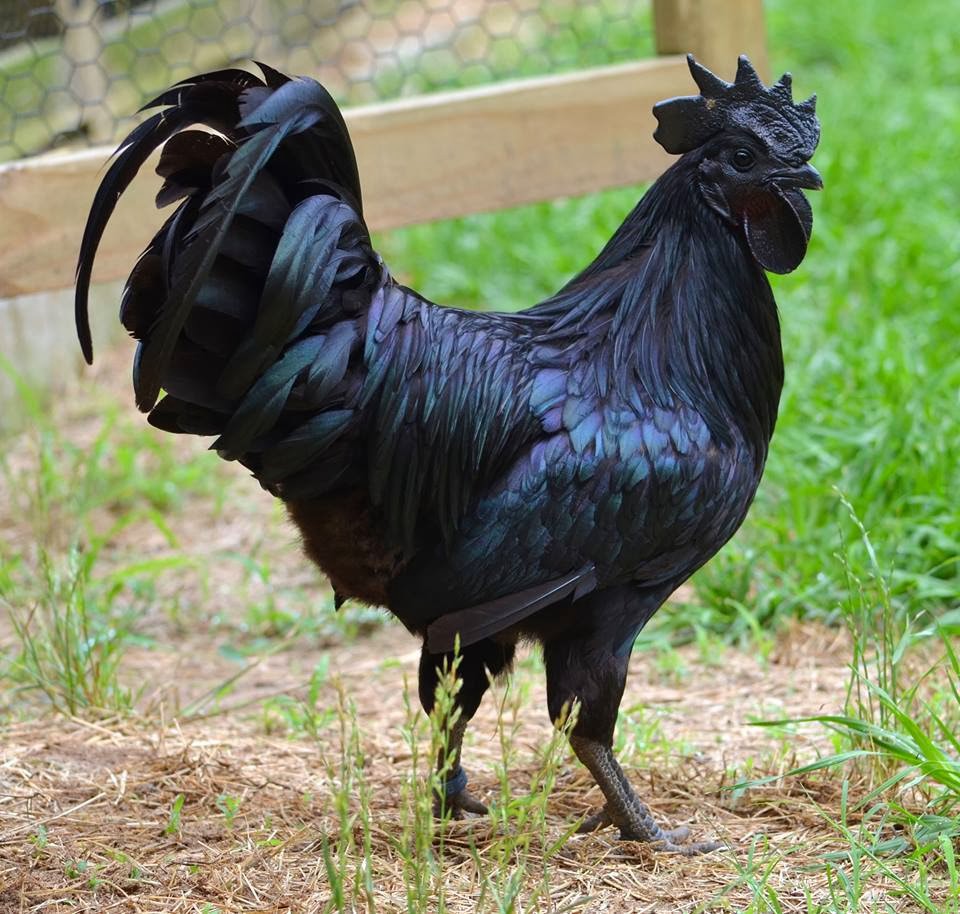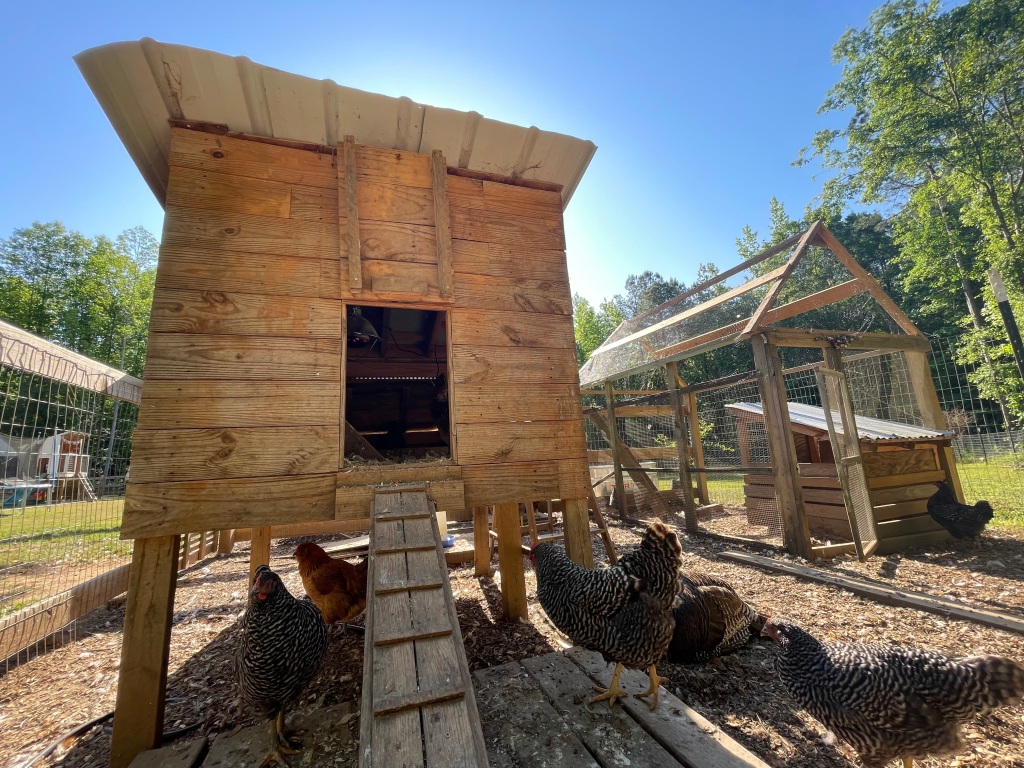
Raising Backyard Chickens
Why Should Use Raise Backyard Chickens?
With egg prices at record highs, having a few "free" eggs isn't a bad thing. With chickens laying, on average, just over one egg per day, it doesn't take many chickens to have a dozen eggs in very little time. Plus, raising chickens is a great first step into the world of homesteading. You can scale your project as large or as small as you'd like. In this post, we explore our experience with raising chickens backyard chickens, and we hope it answers some questions that you might have.
Where It All Started

Having backyard chickens is about the easiest animal you can raise. Our family started raising our first backyard chickens 7+ years ago when we lived in metro Atlanta. A friend sold us three adult hens and a well-used chicken coop. We had always wanted fresh eggs and loved the idea of starting a small backyard garden in the city. It didn't take long for these girls to become part of our family. Within days, we had them eating cereal out of our hands and almost too comfortable in their new home. Since then, we have had over 50+ birds and are currently at 30.

Over the years, we have had many friends say they would like to raise their own chickens and asked us where they should start. It really all depends on where you live. When we lived in metro Atlanta, it was technically illegal to raise chickens in our backyard because we didn't live on more than 2 acres. Many other city or county ordinances have similar code regulations when it comes to raising livestock like chickens. Assuming that it is legal, I would suggest verifying that there aren't additional stipulations like the number of birds you can own, limits on roosters, or having your closest neighbors sign off on it.
MORE INFORMATION ON THE LEGAL SIDE OF RAISING CHICKENS
Once you're familiar with your local ordinances, decide how many birds will fit your needs. For us in the beginning, we wanted to start small and based our population on our current egg consumption. Our four birds laid on average 2-3 eggs a day or 0.75 eggs per bird a day depending on the time of year (some days a hen may not lay) which came out to 14-20 eggs a week. Before we knew it, we had a couple of extra dozen piling up.

Chicken Breeds

There are hundreds of different varieties of chickens, but only a dozen or so are available through the standard purchasing channels. Our first chickens were adults, and that was the last time we ever purchased anything but baby chicks. Honestly, we have only purchased our chicks from Tractor Supply (TS) based on their price, availability, and customer service. Typically, each spring (around Easter) is the earliest you can find the baby chicks in stores like TS or local Feed and Seed stores. We wanted ti to start our latest flock earlier than that, so we went online, and after comparing many online hatcheries, TS had the best availability and prices.
Here is what we paid:
ISA BROWN FEMALE 10 COUNT - $35.99

BARRED ROCK UNSEXED 10 COUNT - $27.99

RHODE ISLAND RED FEMALE 10 COUNT - $35.99

(Side note - Looking back at this order I realized that we ordered 10x Unsexed Barred Rock which is funny because last week, we realized that we have 1-3 roosters running around.)

PRO TIP : The 10% Rule - When starting with baby chicks, always buy based on the idea that you're almost guaranteed to loose 10% of your flock before the first month. We lost 4 upon arrival and TS was good enough to refund us for the loss.
Since the start of raising backyard chickens, we have had maybe 6-8 different breeds of hens like ISA Browns, Plymouth Rocks (Barred Rocks), Australorps, Orpingtons, Rhode Island Reds, Leghorns, and Ameraucanas. Each breed has had its own benefits like blue eggs (Ameraucanas), crazy good eggs layers (Rhode Island Reds), friendly (ISA Brown), and typically long-living (Barred Rock.) You can even get crazy, and order Silkies with their sweet fluffy afros or get your 'goth on' with the ALL black 'Ayam Cemani' from Indonesia.


The Coop

Based on how many birds you'd like to raise and what type of breed(s), you can now determine the size of your future coop and run. Typically, the coop or hen house needs at least one square foot per adult chicken and four sq. ft. for their run. Obviously, the larger the area, the happier your birds will be. There are several different options on types of coops and runs, but the top two are:
Traditional Chicken Coop & Run

Benefits:
-Solid foundation and can be made safe from predators
Cons:
-You must commit to that location and it typically turns the area into a stinky poop swamp during the raining seasons. (This can be combated with a few tips and tricks plus either spending a lot of money on ground cover like mulch or labor creating your own mulch.
Chicken Tractor:


Benefits:
-Great for letting your chickens graze
-Helps keep your yard from being scratched and pecked clean
Cons:
-Less permanent
-Not as safe from daytime predators like hawks
-You have to have a large area and need to move it around often
We chose the traditional chicken coop and run route because we knew we wanted our girls close to our house based on convenience and so we could watch and keep them safe. You can choose to either purchase a premade coop & run or build your own. There are many options out there to purchase kits from like Tractor Supply or your local feed & seed store. We decided to build our own because we had a mix of construction materials left over from when we built our house plus a bunch of free pallet wood.

When providing a home for your chickens it is important that they feel safe and can escape the outdoor elements throughout the seasons and stay warm during the winter months. A Chicken’s eggs supply drops drastically during colder months especially if they are fighting to stay warm all day.
That's really all it takes to get started raising your own chickens. You're sure to learn some lessons along the way, but there's plenty of resources available in print and online. If you currently have your own backyard birds, feel free to drop other tips and tricks in the comments. Stay tuned for follow-up posts on 'Coop-Hacks' and other tips and tricks on raising backyard chickens!



